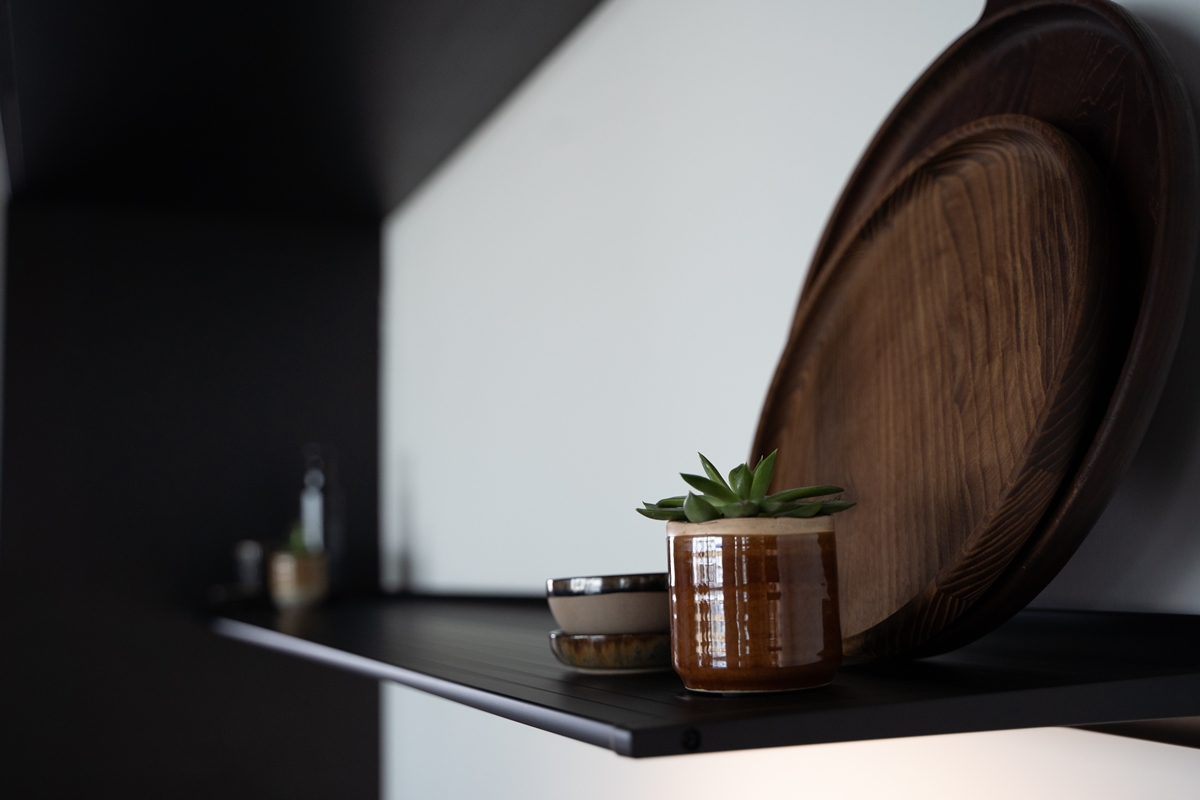
Shelving is clearly a handy and practical thing to have in your home. However, not every type of wood makes for suitable shelving. Actually, choosing the wrong wood can lead to an absolute disaster happening.
That then opens up the question of which wood species you should focus on using if you plan to add some shelving anywhere in your home? A number of options are best ranging from the widely available pine, to white oak, mahogany, fir and cedar. Any of those will prove to be fantastic when it comes to shelving.
But with so many types of wood out there to choose from, I know it can become quite tricky and complex to work out what to do. So, I’m going to solve that problem for you, and it’s only going to take a few minutes for me to achieve this.
I’m not going to make life complicated for you by giving you this massive list of wood that you can use for shelving. Instead, I will narrow down your options quite considerably, actually, to just six different options for this basic project.
I know some people may argue against the six I have chosen, but I feel they represent the best options regarding durability, strength, and also price. Let’s face it, you don’t always want to spend a fortune when it comes to something as basic as this. However, there’s also a time when the appearance of the wood shelving also has to fit in with the rest of the decor in the room.
So, don’t worry because, in the course of the next few minutes, you will learn everything there is to know about the best shelving options.
Table of Contents
Pinewood
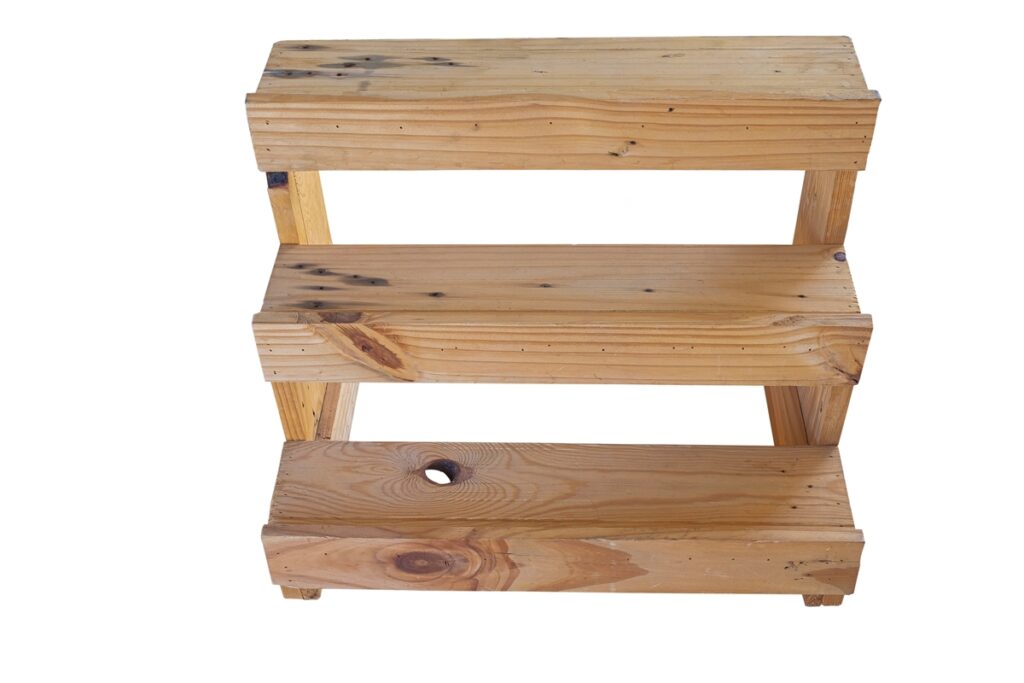
I think that pinewood must be one of the most popular options when it comes to shelving, and I say this for several reasons.
First, it’s inexpensive, and that’s an excellent reason for using it. You can pick up some pinewood from any hardware store, and you will also have the opportunity to pick it up in various thicknesses. That does make people feel you can use pine for a range of projects. Also, how often do you see pine shelving for sale in stores? It happens all the time, so it makes sense you can then go ahead and use it yourself.
But that’s not the only reason why I love pine.
It’s also very easy to work with, so cutting the shelf to size will not be a problem. Also, if you intend to take it away from that pine coloring, then you will quickly discover that this wood is more than happy to absorb stain or paint to completely change its appearance.
However, this also means it’s easy to get pine to blend into your surroundings. Leaving it relatively plain will result in a lighter appearance, and one that is undoubtedly far more rustic in style, while you can paint it in any color you like for it to then blend it in.
And yet, pine is not foolproof. Instead, I need to remind you that pine is a softwood. It’s very easy to dent and scratch it, so its appearance can become tarnished in next to no time.
Therefore, using it for heavy objects is perhaps not the best idea. Your shelves can quickly take on a tired look, and you may then need to contemplate changing them.
Yet even though that’s a potential problem, I still feel that pine is one type of wood you need to consider using for shelving.
Pros
Cons
White Oak
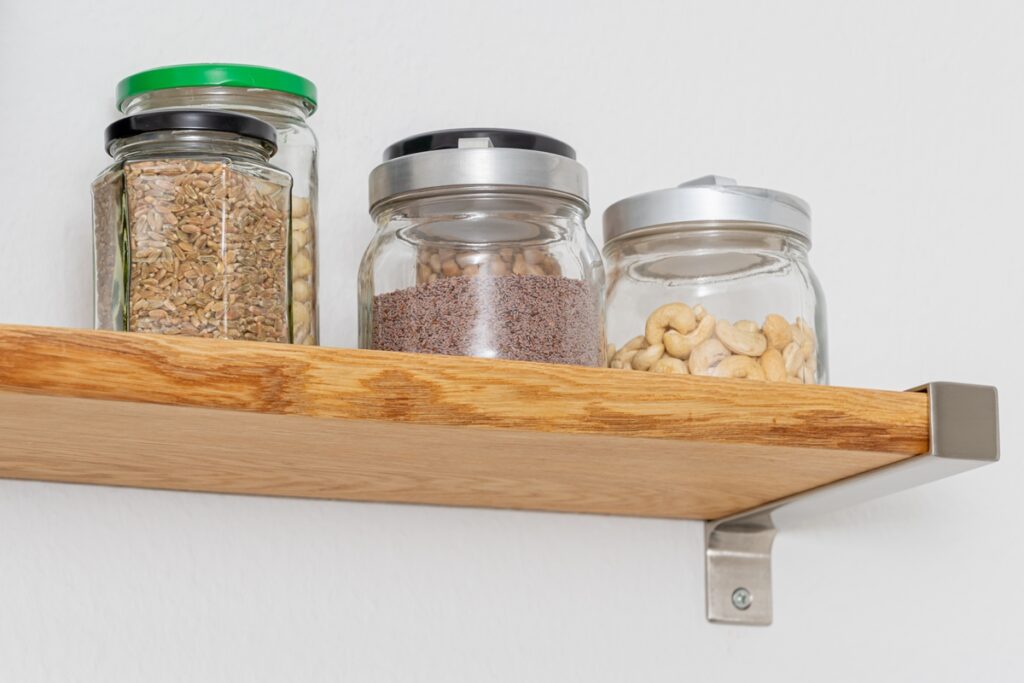
Even though I’ve picked white oak here, I feel that oak, in general, is a fantastic wood for shelving. It’s robust and solid, so you always get the impression it can handle more weight and is more resistant to bumps and dents. But remember it’s slightly harder to work with.
I know oak is more expensive to purchase than pine, but it does also look more expensive. So, if you plan on going for more of a refined look with your shelving, then this is certainly one material you should seriously consider.
But as with pine, oak is also fantastic when it comes to absorbing staining and transforming the coloring. I do prefer when this is an option as it opens up more ideas on what you can do with your shelving when you know you are not stuck with keeping it in its natural color.
Overall though, it’s the strength of oak that makes it a fantastic choice. You feel as if you can place anything on oak shelving, and it will be able to cope, and that sense of confidence you have in the material is a fantastic thing to have.
Also, oak works well if you plan on having more of a chunky and solid look to your shelving. It’s certainly not the species of wood I’d use if you are on the lookout for something delicate. Oak just doesn’t really do that type of thing.
Pros
Cons
Cherry
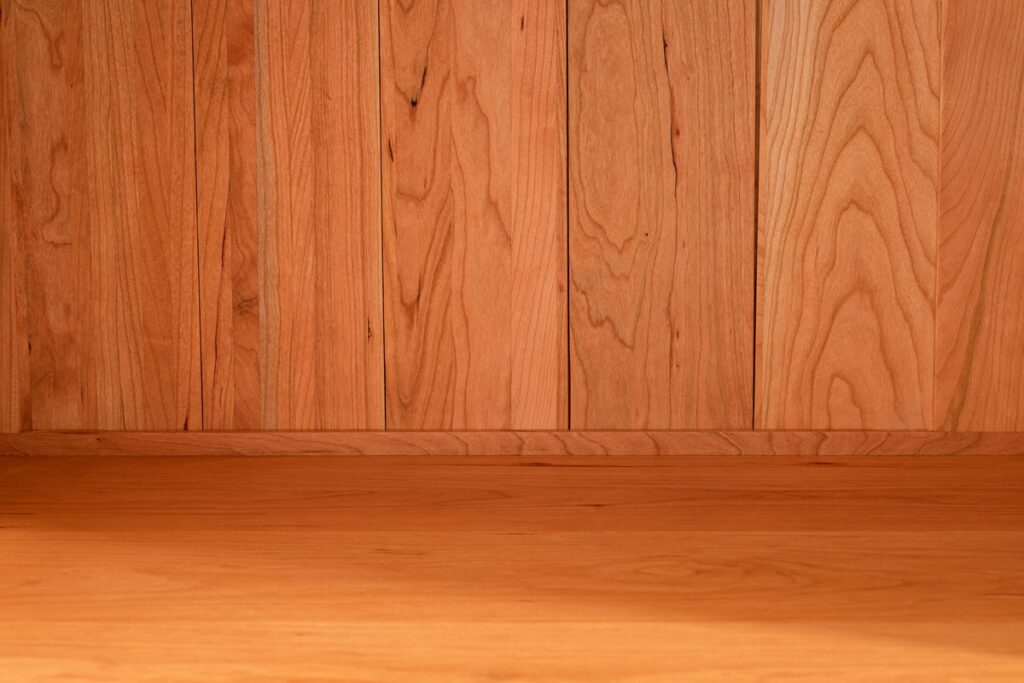
I feel that cherry is a wood that is sometimes overlooked when it comes to shelving, and that’s a pity. Honestly, it looks expensive, even though that’s not always the case, and even though it’s a hardwood, it’s not the heaviest around.
I also view cherry as being relatively easy to work with. You will have no problem cutting it to size and sanding it down to make everything smooth. But I do also appreciate the coloring that comes with it. Cherry has a warmth to the wood that’s difficult to get with other kinds of wood, and the color is something that does evolve and improve over time.
For that reason, I would generally leave cherry alone and not stain or paint it. To me, you would be effectively destroying the wood by doing that, and it’s just such a gorgeous wood to look at that I think that would be a shame.
But even though cherry is light, don’t make the mistake of thinking it must be weak. It’s not.
Instead, it can work exceptionally well as shelving for books and a number of other items. However, I do admit that even though cherry is an excellent wood to work with, it does cost more than most of the other options you may look at.
That expense could be enough to put you off choosing this as an option. But honestly, I would give it some serious consideration if you are looking for something darker in style. However, if you would prefer to have lighter colored shelving, then cherry would not be your answer as it would then lose so much of its character if you tried to change the color too much.
Pros
Cons
Mahogany
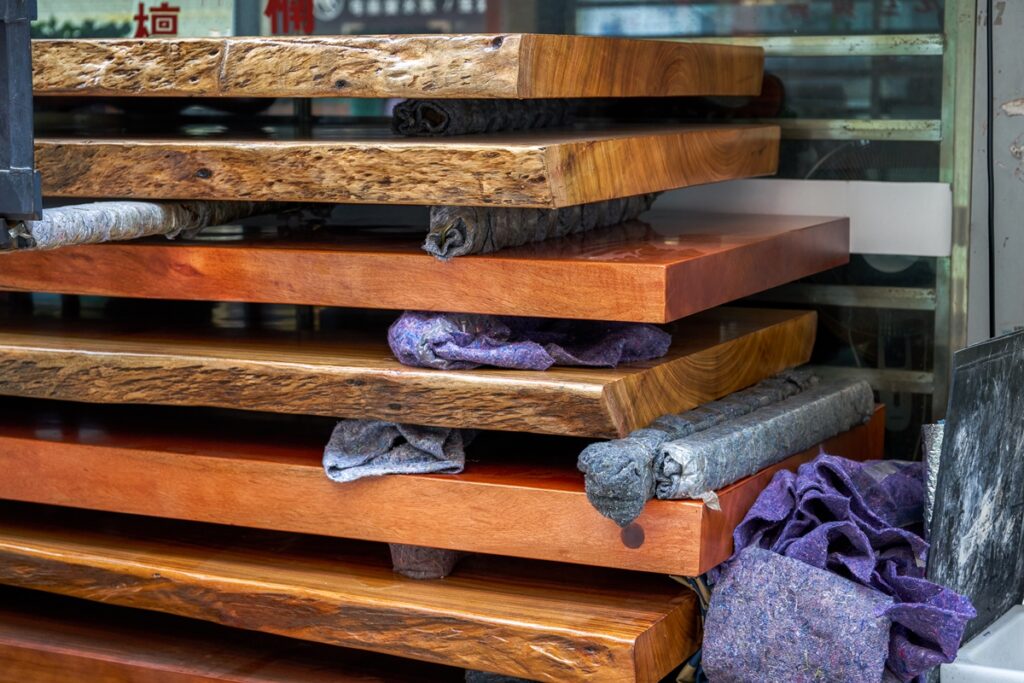
I’m going to also guess that mahogany would have been a wood that would spring to mind when it comes to shelving, but that’s due to its popularity and most people being aware of it. Also, it’s just one of the easiest woods to get your hands on.
For me, mahogany has almost a regal sense about it. The wood itself is gorgeous, so please do not do anything to it where you effectively hide its beauty, and it adds a real sense of class to a room when mahogany is used.
But aside from its beauty, which you cannot dispute, I think it’s the durability and strength of this wood that makes it a fantastic choice. Because it’s so durable, it doesn’t scratch or dent too easily, and that means your shelving will continue to look as good as new for longer than you thought possible. Also,
But, just as with cherry, this wood species does come with a problem, and it’s the cost. People know mahogany is not a cheap wood, so it’s less of a surprise in that sense. However, it just looks so good in its natural state that I feel it’s worth the added expense if you do wish to go for that rich and regal look with your shelving.
But as with cherry, I wouldn’t use mahogany if I was wanting something light. It’s just not going to work, and it’s the depth of color that really makes mahogany stand out.
Pros
Cons
Douglas Fir
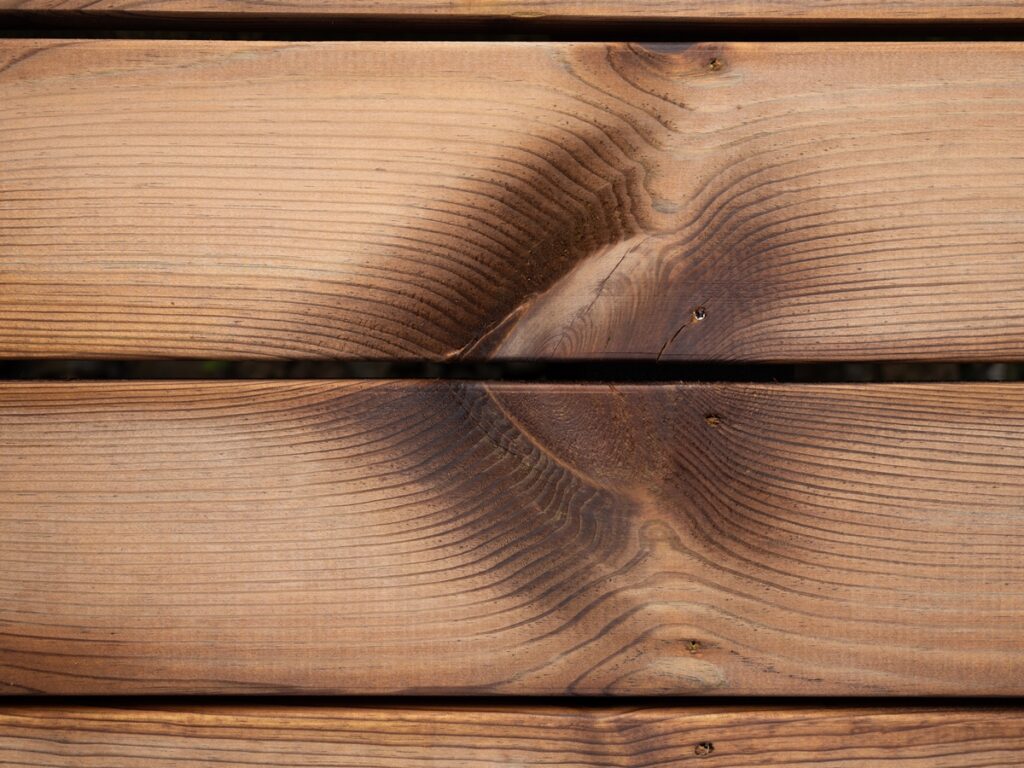
I love Douglas fir, even though it’s best used if you are looking for more lightweight shelving that won’t be required to hold too many heavy items. If that’s the case, then fir can be the perfect choice for you.
Douglas fir is highly versatile as a plank of wood and soaks up the stain with ease. That means you should have no problem changing its appearance, and you can then ultimately make it look similar to the likes of oak. The good news? It costs you a fraction of the price, which is excellent news.
I feel that this is a great option when you are perhaps a bit unsure as to what you want from shelving. The versatility and general strength of fir mean it can cope with a number of items placed on the shelving, and that earlier point about changing the appearance so easily does help.
Overall, I would place Douglas fir in the same bracket as pine for cost and effectiveness while going for the basic shelving option. It may not have the same grace as the likes of mahogany or cherry, but it’s still a highly functional kind of wood for this type of purpose.
Also, I see this as the perfect wood if you want to have something that has more of a rustic feel and look to it. For that, Douglas fir is the perfect solution, especially if you then plan on just giving it a light stain, or even leaving the wood in its natural state.
Pros
Cons
Cedar
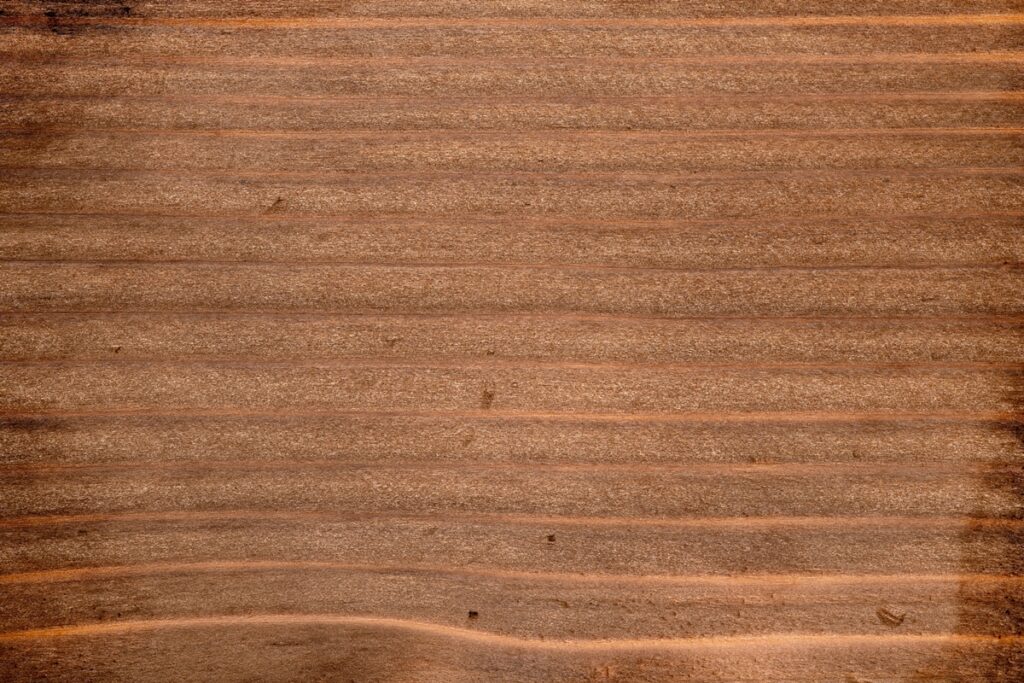
I think cedar is a great wood to use for a number of different projects, and shelving is no different. One thing I love is the fact that cedar wood is exceptionally strong. That means your shelving should be capable of holding a substantial amount of weight, but only if you have installed the correct brackets to help you out.
But cedar wood has more to it than simply strength. I see it as quite an attractive wood with a gorgeous grain, so your shelving will not look cheap and horrible either. Yet I do know a couple of key points you should consider if you do plan on using cedar wood regarding shelving.
Cedar wood can warp and crack. I would always ensure you keep the shelving relatively short in length from a single plank to eliminate that particular problem. It’s easier to install two individual shelves side by side to create a longer one rather than pushing out the length of the plank of cedar. In saying that, some basic tools will be enough to cut and shape as you need.
The other main thing to think about with cedar wood is that you often need to carry out more maintenance with this wood than you do with others. That means adding oil or sealant to help protect the wood, but how often you do this does depend on where the shelving is located.
But overall, I just feel that cedar is a strong and gorgeous option for s
